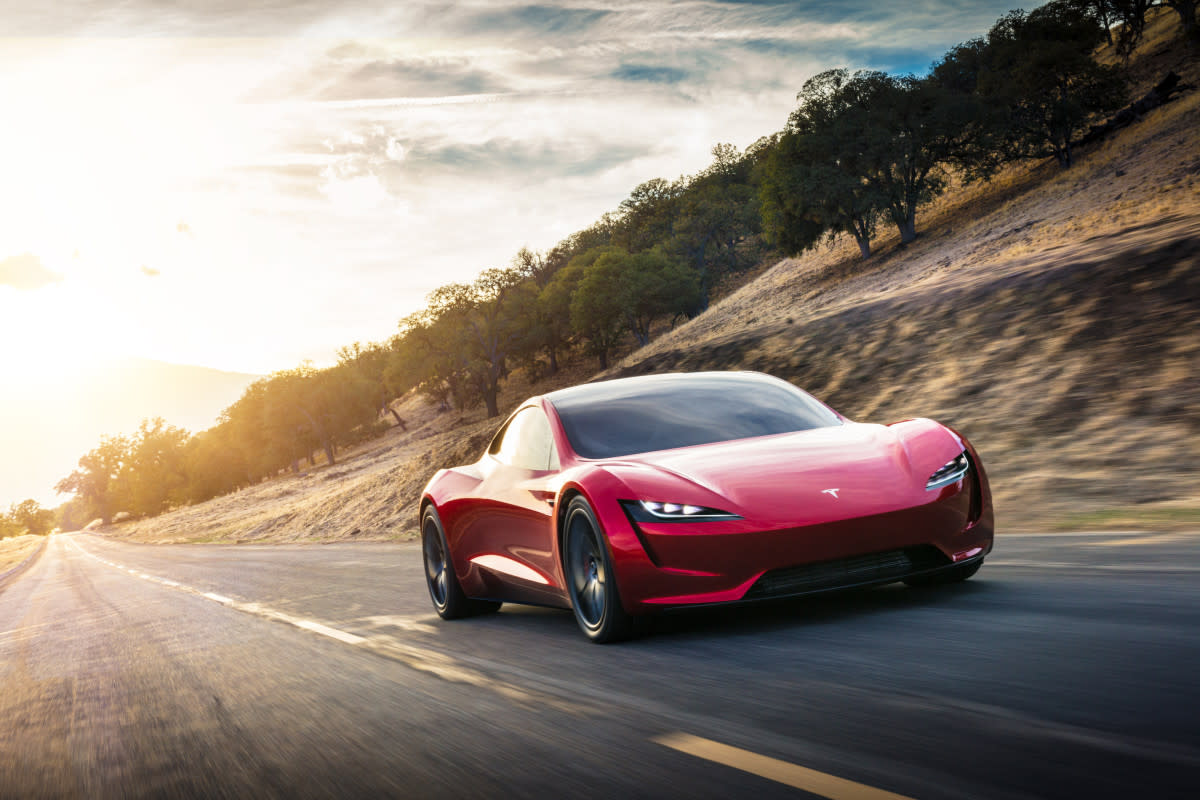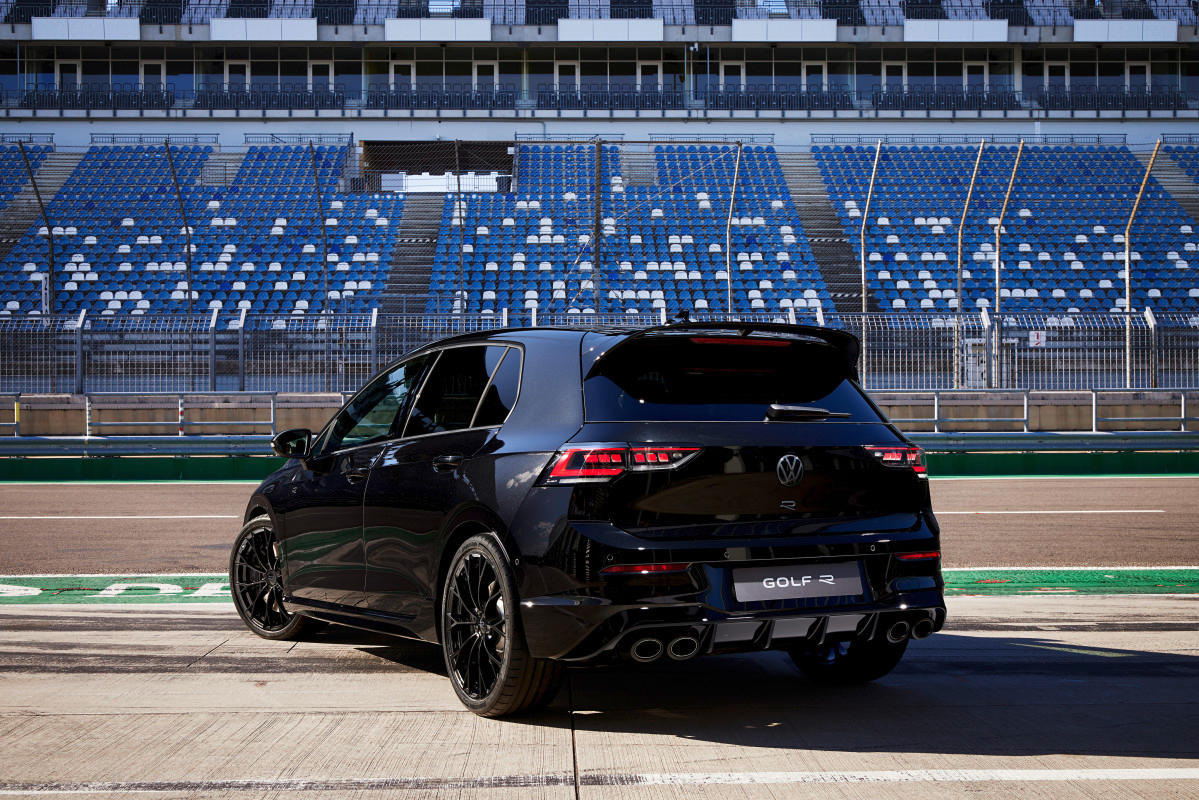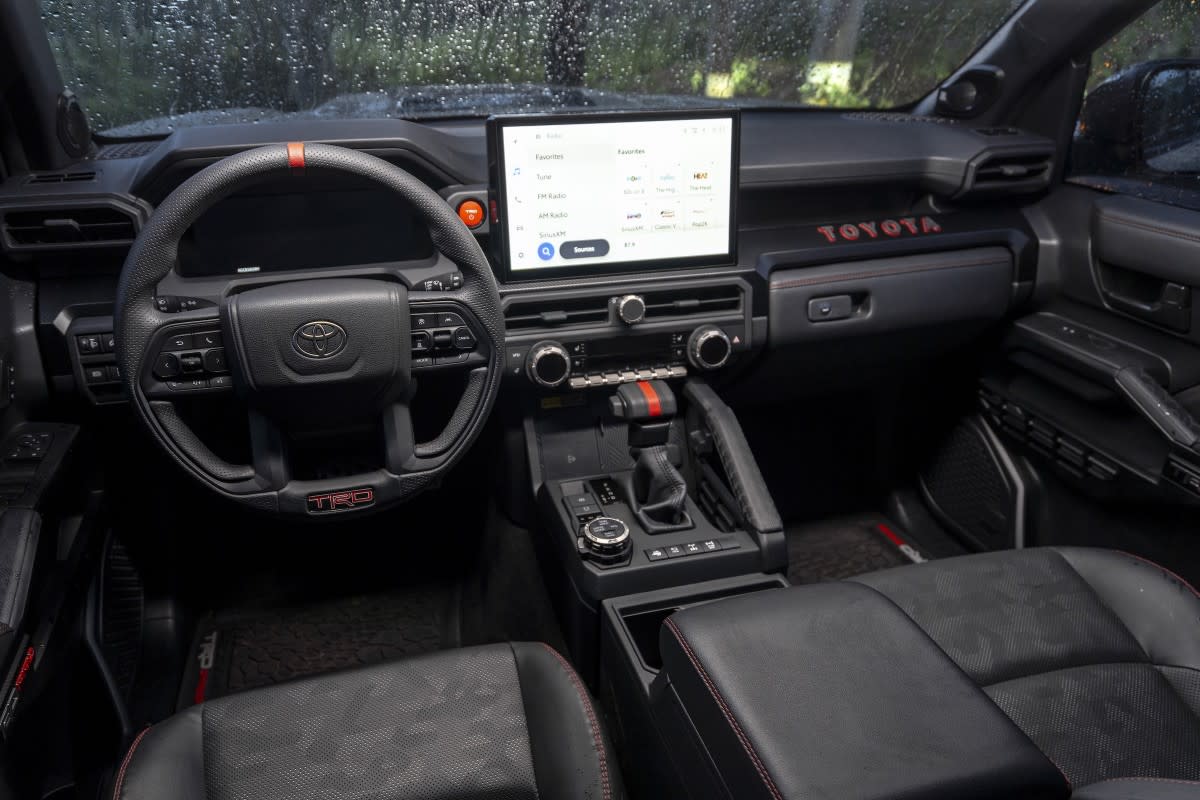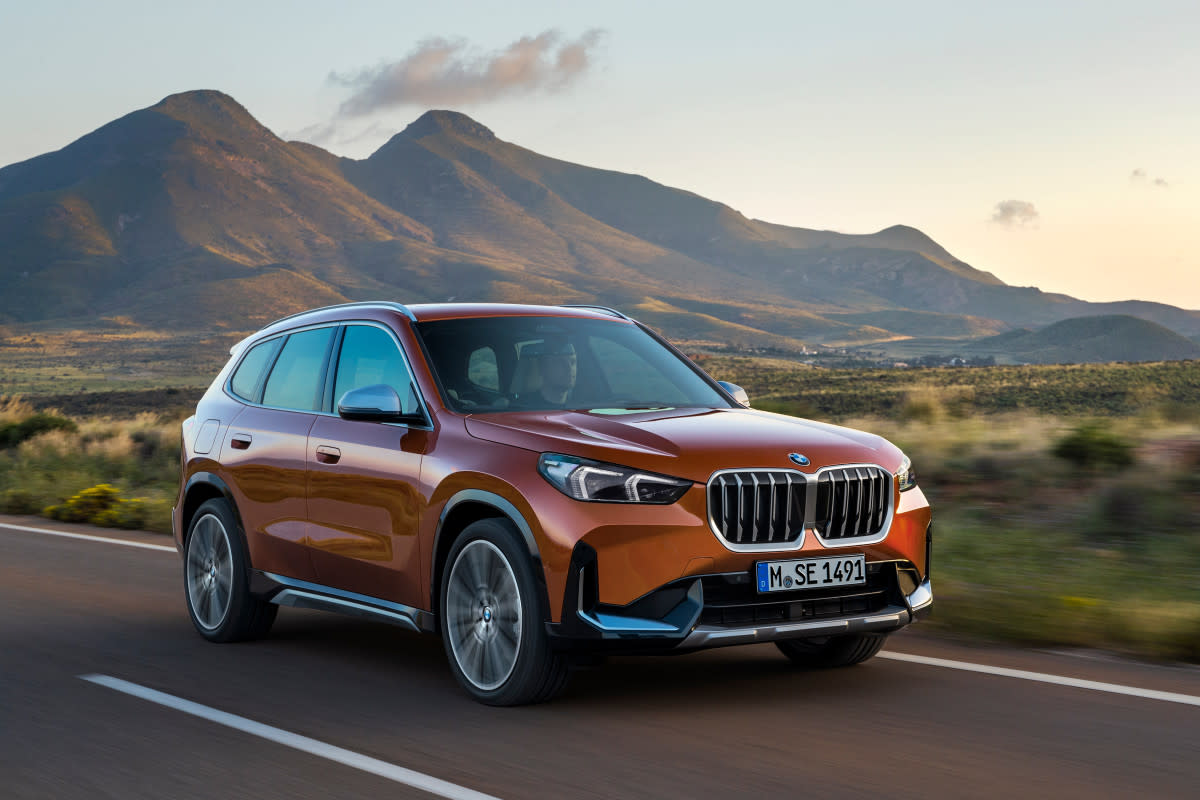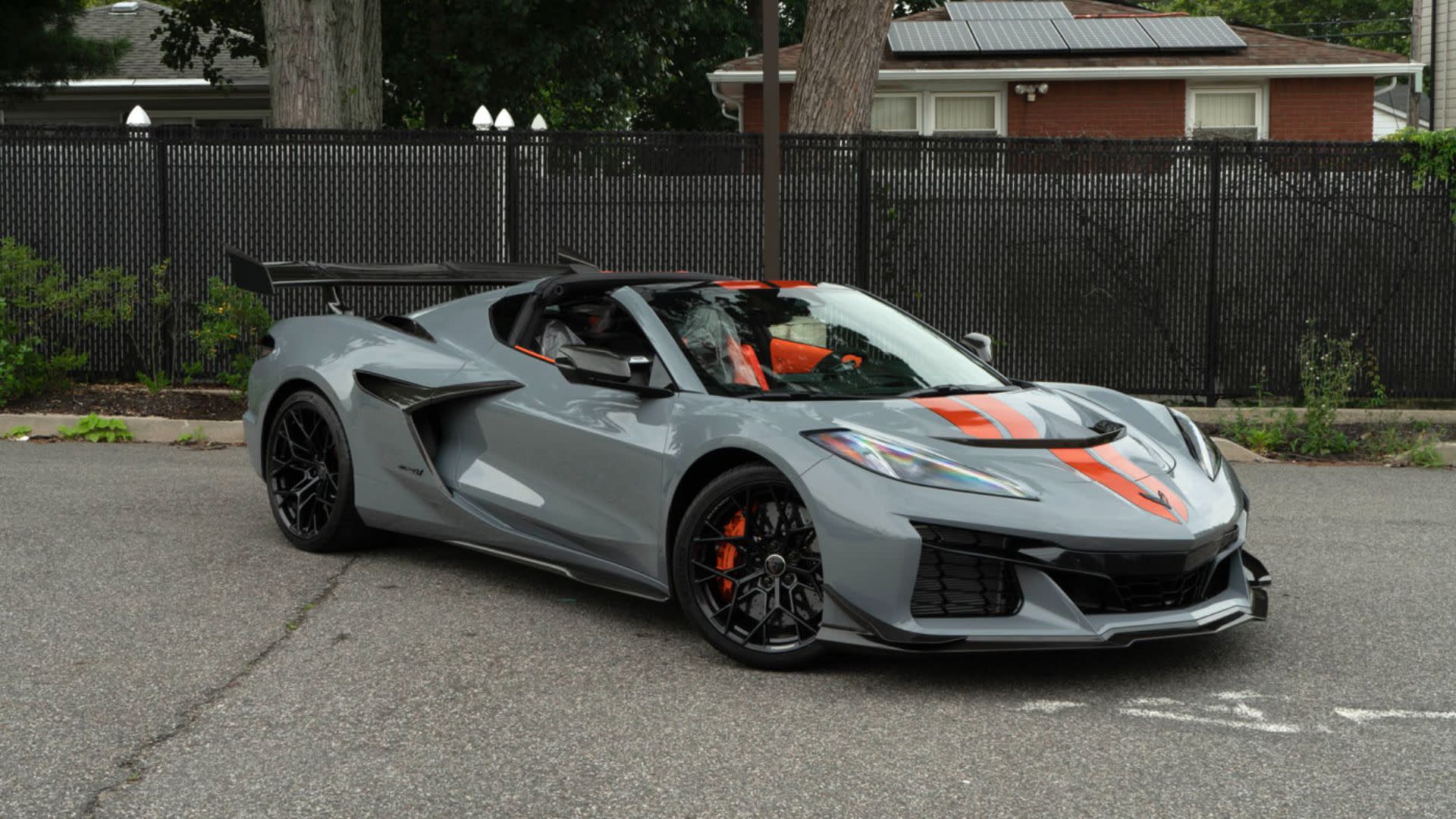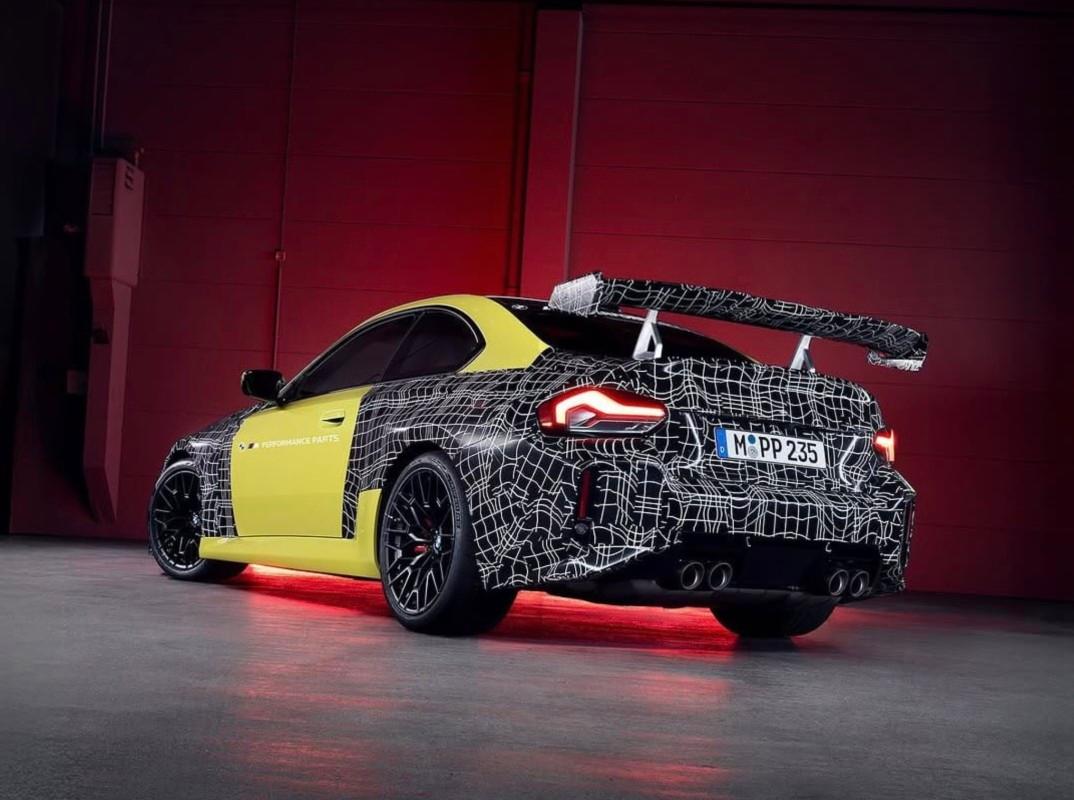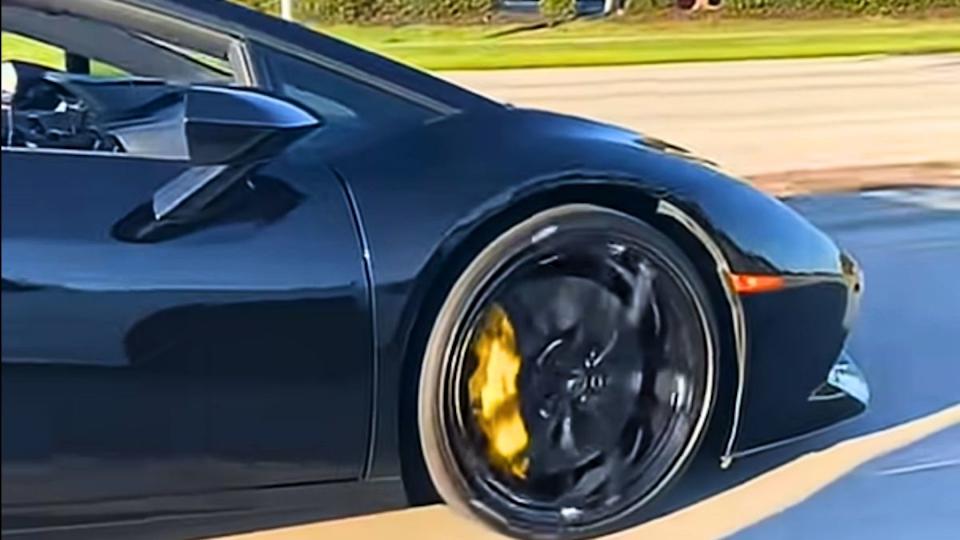Is the new Range Rover Electric worth £170,000? I drove it to find out
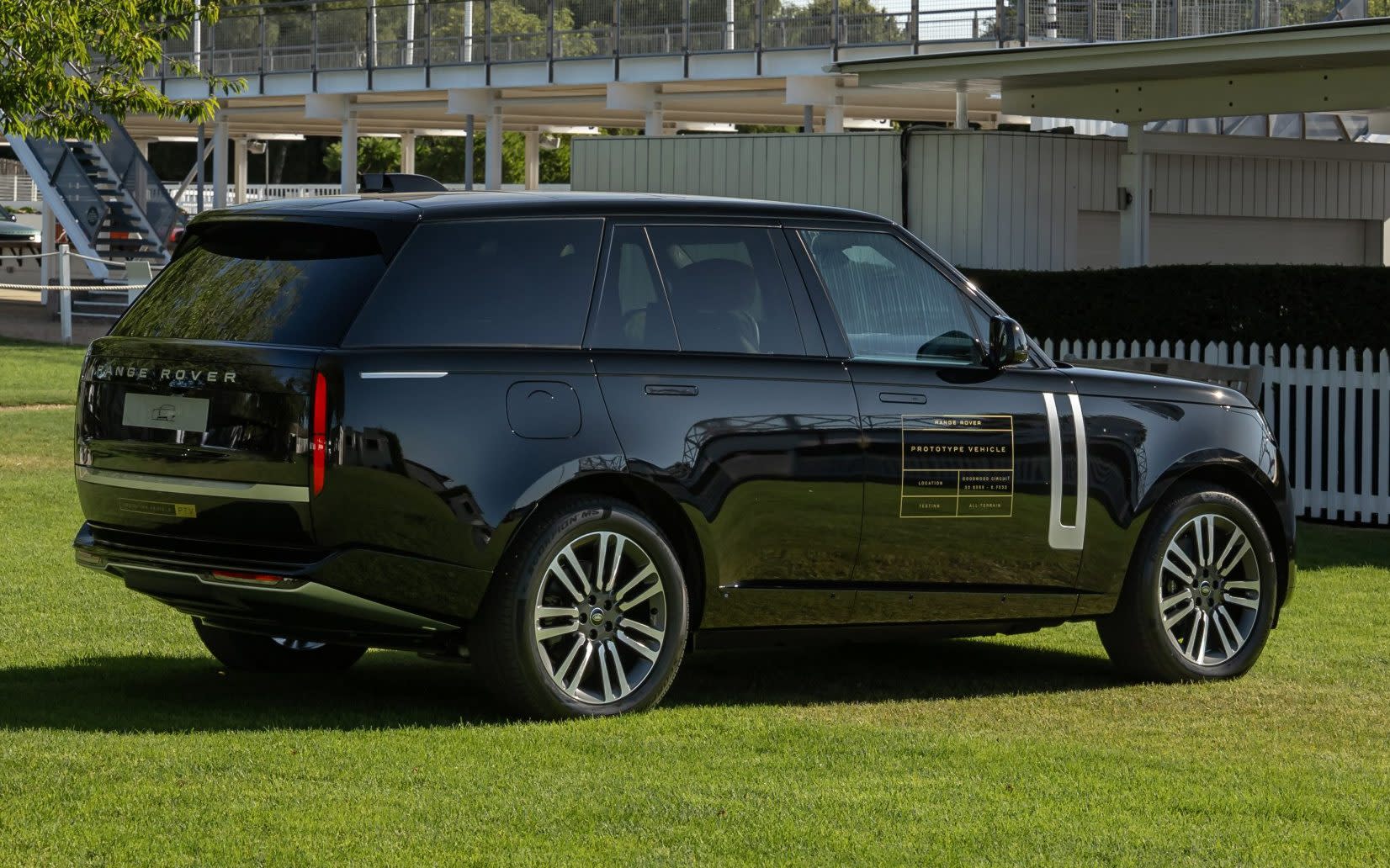
It’s finally here. Sort of. The Range Rover Electric will not be available until 2026, despite initial suggestions of an on-sale date in the latter half of this year. Nothing more precise than that, with no indication of prices either.
But prototypes and pre-production cars exist on the world’s testing facilities as well as on the roads around Land Rover’s Solihull base. And I have driven one of these prototypes, during the Goodwood Festival of Speed, to see how it measures up.
The rumoured cost is about £170,000 – roughly equivalent to the V8 petrol version, which was the benchmark for this newcomer since gestation and during development. The Range Rover line-up starts at £105,675.
Despite the lack of hard figures, Range Rover says that it has a “client waiting list” of 62,000 souls.
What we do know is that the battery is a 118kWh (useable) item. There’s 550PS (542bhp) and 850Nm (627lb ft) of torque, with a range in the region of 300-330 miles and a 0-62mph sprint time of about 4.5 seconds, although no performance figures have been announced yet.
“It’s a Range Rover first, an EV second,” can be heard a lot; all the engineers and development drivers have been well versed in this mantra.
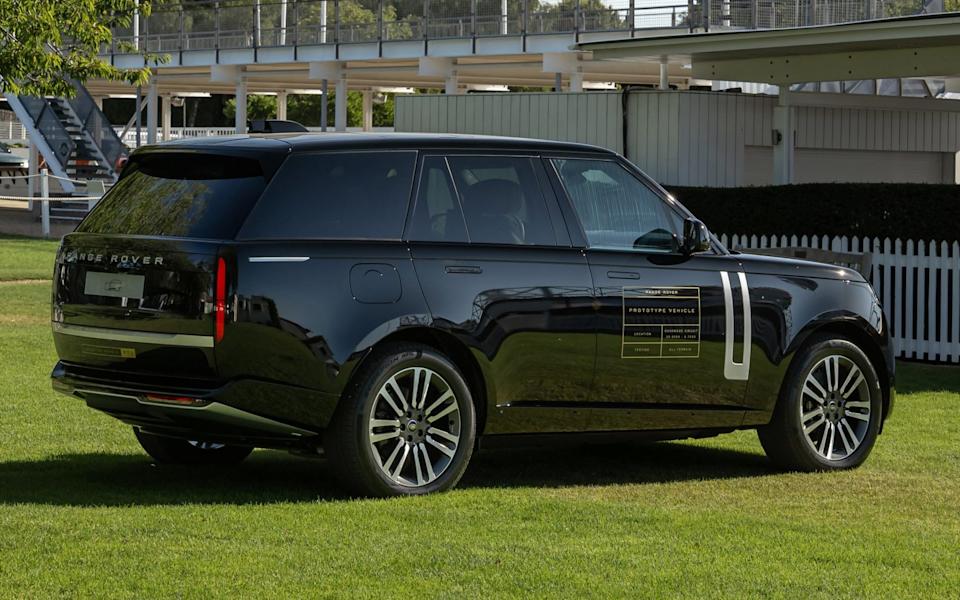 The Range Rover Electric prototype: the technology may be cutting edge but the look is reassuringly traditional - David Shepherd
The Range Rover Electric prototype: the technology may be cutting edge but the look is reassuringly traditional - David ShepherdTest drive
My all-too-brief introduction to the Range Rover Electric was to demonstrate its abilities over a series of daunting obstacles of the type used during development.
Essentially the aim was for the EV to do everything the existing combustion models can – and perhaps a little more, since careful calibration of the torque delivery allows the electric drivetrain to “talk” to existing electronic systems such as Hill Descent Control.
The first is a series of crazy-looking ramps to simulate crawling over massive boulders, which pitch one (sometimes two) wheels in the air while balancing precariously. As with all off-roading, smooth and gentle is the key to progress (the desire not to prang a development car also prompts caution).
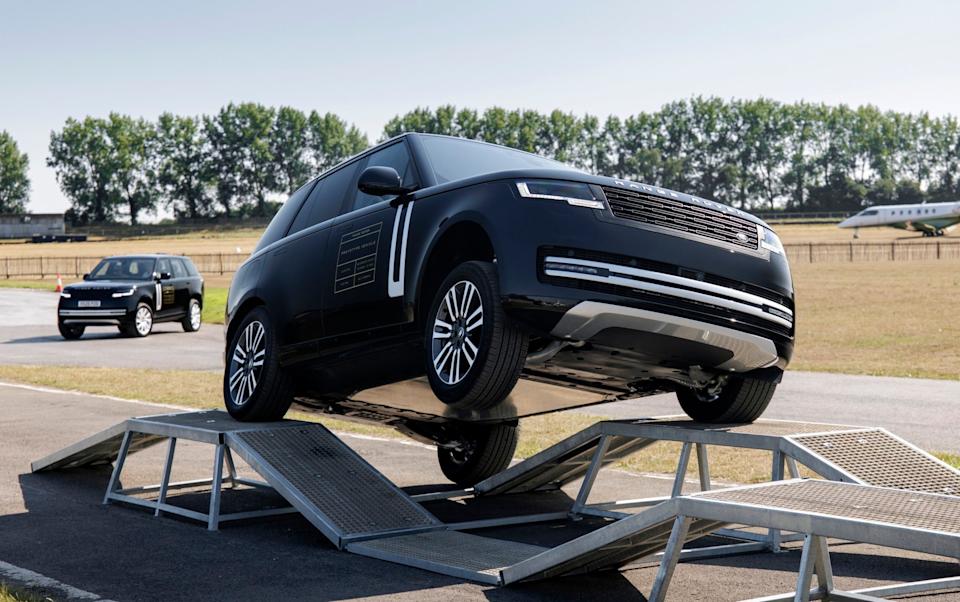 The first test involved ramps to simulate off-road crawling over massive boulders - Nick Dimbleby
The first test involved ramps to simulate off-road crawling over massive boulders - Nick DimblebySuffice to say that the car was more composed than its driver, imparting a feeling of stability and control via a zillion calculations monitoring progress. It’s called Integrated Traction Management and ensures that the prodigious torque doesn’t overwhelm the amount of grip.
The second test is a ramp, which doesn’t look that steep until you start to drive up it and can see only the sky. Fortunately the car’s surround camera system displays images of ahead and below for guidance. Gently over the top, then let the car demonstrate its seamless integration of single-pedal driving and Hill Descent Control. How so? Simply take your foot off the accelerator and let the car creep its way down.
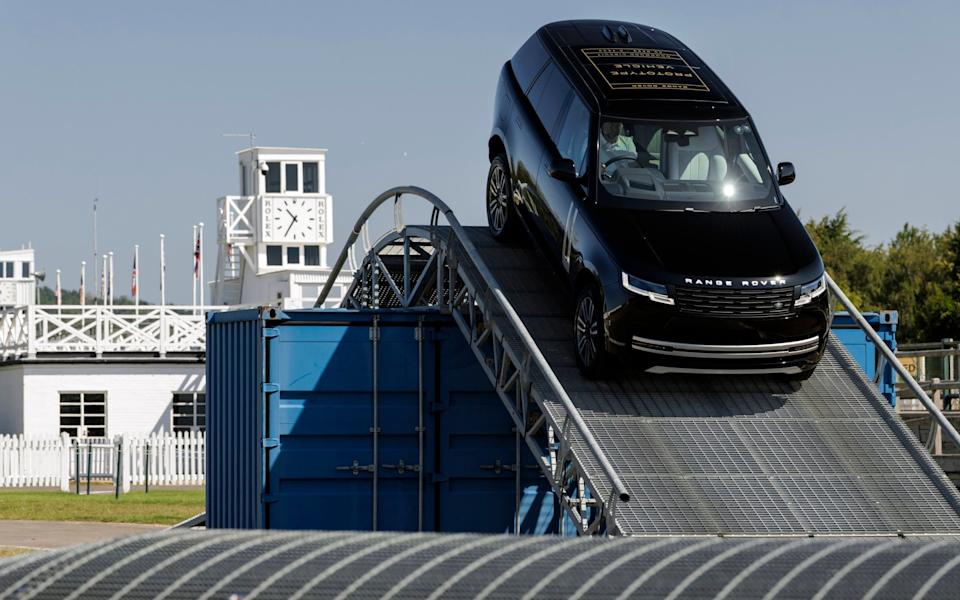 The second test emulated cresting a steep hill, and drew on the Range Rover’s Hill Descent Control - Nick Dimbleby
The second test emulated cresting a steep hill, and drew on the Range Rover’s Hill Descent Control - Nick Dimbleby The third is a simple-looking diagonal crossing of an obstacle, once again with the low-speed Rock Crawl setting engaged. The surprise comes as the vehicle’s weight makes it tip, forcing the electronic systems to prevent it rolling off.
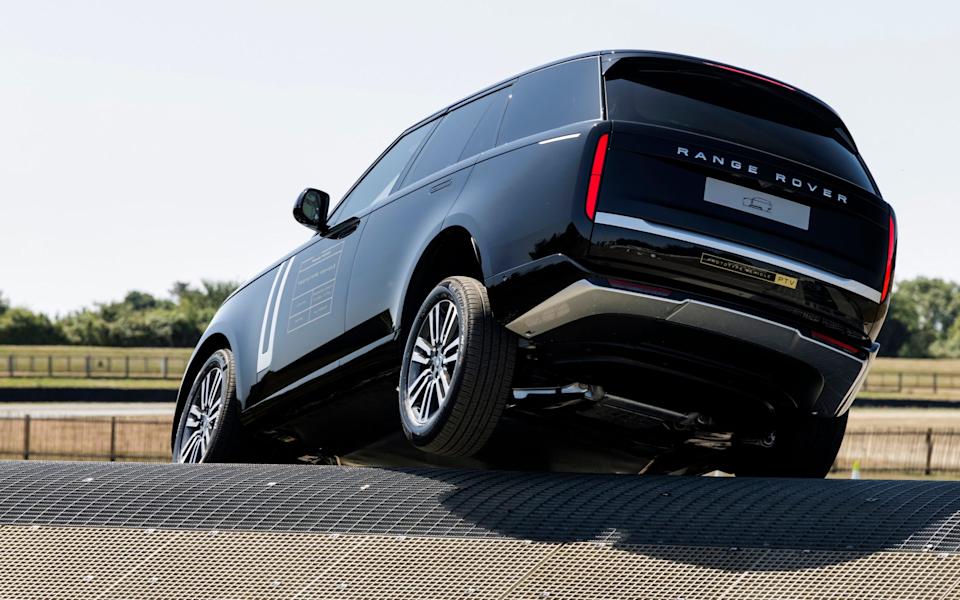 The third test was of the low-speed Rock Crawl setting, as the prototype crossed an obstacle diagonally - Nick Dimbleby
The third test was of the low-speed Rock Crawl setting, as the prototype crossed an obstacle diagonally - Nick DimblebyIt would have been interesting to do the same course in a V8 Range Rover for direct comparison, although the development engineers insist that the fast-responding electric drive units provide greater ease of use and improved control (compared with the complex sequence of sucking and pumping inherent in a combustion engine). JLR claims that in detecting and managing wheel slip, the EVs set-up is 100 times faster than the combustion cars.
It’s all about the calibration – a phrase that occurs frequently throughout the afternoon.
What’s all the fuss about?
For those who still believe that electric cars should have futuristic, quasi-spaceship styling to emphasise their cutting-edge technology, the greatest surprise about this EV Range Rover is how normal it looks. Extra charging flap aside, they are identical.
It’s the same story inside. Land Rover has even retained its traditional capstan gearlever, although it performs different functions than it does in the combustion-engined cars; the S is for single-pedal driving (with regenerative braking) rather than Sport mode.
It all emphasises that the Range Rover Electric is an alternative to the existing line-up, not a replacement.
Electric drivetrain
The advantages of battery power are a linear response to the accelerator along with effortless torque delivery.
Initial rumours had suggested the Range Rover Electric might have three or even four drive motors, yet in the final set-up there are only two, one at each end of the car. It’s four-wheel drive, obviously, with a slight rearward bias in the power delivery.
The battery and control electronics were developed in-house and are currently produced in Wolverhampton, which has the added benefit of bolstering Land Rover’s credentials for Britishness.
Chief engineer Simon Fairbrother explained that the 118kWh battery has 344 cells using NMC chemistry, in two decks of 172, made possible by the vehicle’s height.
With a 350kW charging capability (assuming you can find any such super-fast chargers in the UK), charging the battery from 10 to 80 per cent is claimed to take only 20 minutes.
The clever bit is the thermal management, so that heat can be directed to where it is needed (to warm the electric motors or optimise charging in cold weather, for instance).
Range Rover claims that its Thermal Assist system is so sophisticated that it can recover heat even when the external temperature is minus 15 degrees centigrade. It’s a claim that’s hard to dispute, but impressive none the less.
In reverse, the system channels excess heat within the battery pack to the atmosphere via a system of radiators and vents.
Electric always planned
The current Range Rover, which has the internal designation L460, was designed to be an EV from the outset. Hence it can be built on the same production line as the existing models. Currently, the combustion cars have the engine, gearbox, mechanical four-wheel-drive gubbins and associated subframes lifted in the bodyshell.
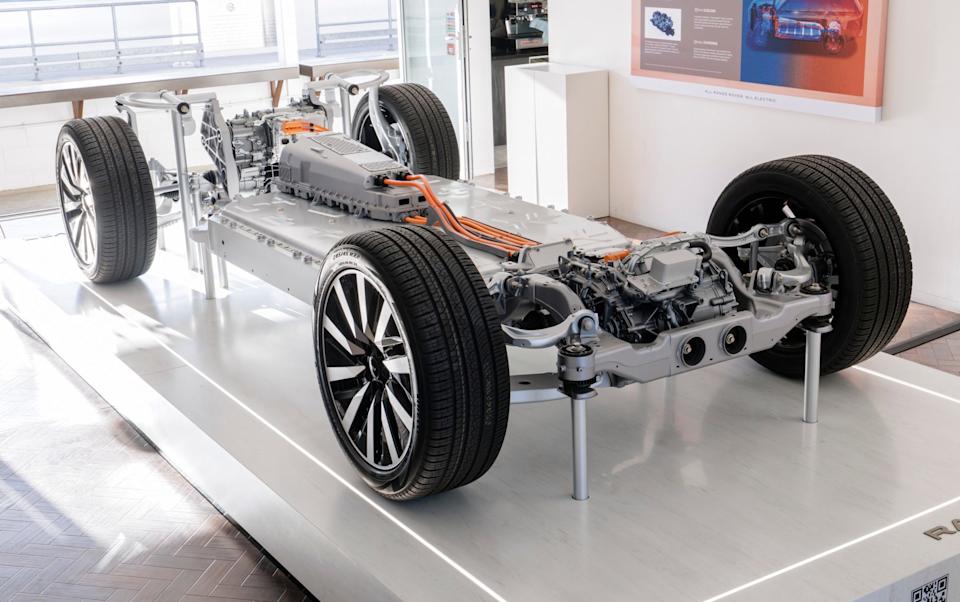 A cutaway of the Range Rover Electric’s chassis. The main control systems sit on top, where the gearbox would be in combustion-engined versions - Nick Dimbleby
A cutaway of the Range Rover Electric’s chassis. The main control systems sit on top, where the gearbox would be in combustion-engined versions - Nick DimblebyIn the EV, the battery and electric motors are raised instead (obviously there’s no longer a mechanical linkage between engine and driveshafts). The only difference is that it takes slightly longer to “marry” the EV drivetrain, as there are more bolts to tighten.
Fairbrother added that the frame around the battery pack improves the torsional stiffness of the car, while the centre of gravity is also lowered compared with a combustion model.
The suspension has twin-chamber air springs as standard, to better manage pitch and squat under acceleration and braking, which are potentially more pronounced in this version than in the current combustion cars due to the virtually instantaneous torque delivery.
Do you want one?
Although sister JLR company Jaguar announced long ago that it’s going to be an all-electric brand and released the i-Pace in as long ago as 2018, this car is Land Rover’s first battery-powered production model. Lessons learnt during its ongoing development will no doubt inform Jaguar’s controversial electric GT.
Range Rovers have always featured V8 engines, so the concept of a battery-powered version is still alien to some. For that tranche of buyers, there will still be petrol, diesel and hybrid options.
But in truth the silence and smoothness of an electric powertrain suits a luxury car; the improvements in these areas (not that combustion-engined Range Rovers are particularly bothersome) ensure the electric version complements the existing line-up.
We’ll have to see when we drive the finished car, but on the evidence thus far the Range Rover Electric might just be the best of the bunch.
Broaden your horizons with award-winning British journalism. Try The Telegraph free for 1 month with unlimited access to our award-winning website, exclusive app, money-saving offers and more.


